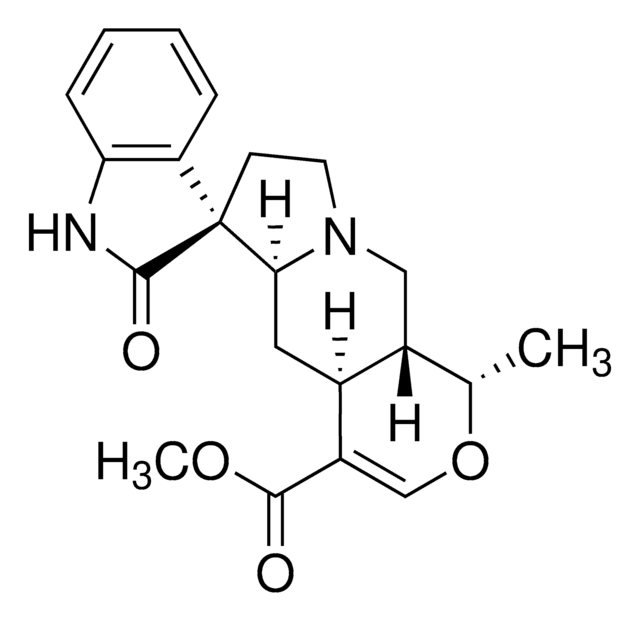T65404
2,4,6-Trihydroxybenzaldehyde
≥97%
Synonyme(s) :
Formylphloroglucinol, NSC 38610, Phloroglucinaldehyde, Phloroglucinolcarboxaldehyde
About This Item
Produits recommandés
Pureté
≥97%
Pf
195 °C (dec.) (lit.)
Chaîne SMILES
[H]C(=O)c1c(O)cc(O)cc1O
InChI
1S/C7H6O4/c8-3-5-6(10)1-4(9)2-7(5)11/h1-3,9-11H
Clé InChI
BTQAJGSMXCDDAJ-UHFFFAOYSA-N
Vous recherchez des produits similaires ? Visite Guide de comparaison des produits
Application
- 2,4,6-trichlorophenyl hydrazones with potential inhibition of protein glycation
- Esculentoside A derivatives with haemolytic activity and LPS-induced nitric oxide production inhibition
- α-Nucleophiles for hydrolysis of organophosphorus nerve agents
- Xanthine oxidase inhibitors
- Non-complexes Schiff base hydrazones
- Methylated (±)-epigallocatechin gallate library for anticancer activity studies
Mention d'avertissement
Warning
Mentions de danger
Conseils de prudence
Classification des risques
Eye Irrit. 2 - Skin Irrit. 2 - STOT SE 3
Organes cibles
Respiratory system
Code de la classe de stockage
11 - Combustible Solids
Classe de danger pour l'eau (WGK)
WGK 2
Point d'éclair (°F)
Not applicable
Point d'éclair (°C)
Not applicable
Équipement de protection individuelle
dust mask type N95 (US), Eyeshields, Gloves
Certificats d'analyse (COA)
Recherchez un Certificats d'analyse (COA) en saisissant le numéro de lot du produit. Les numéros de lot figurent sur l'étiquette du produit après les mots "Lot" ou "Batch".
Déjà en possession de ce produit ?
Retrouvez la documentation relative aux produits que vous avez récemment achetés dans la Bibliothèque de documents.
Les clients ont également consulté
Notre équipe de scientifiques dispose d'une expérience dans tous les secteurs de la recherche, notamment en sciences de la vie, science des matériaux, synthèse chimique, chromatographie, analyse et dans de nombreux autres domaines..
Contacter notre Service technique









